1. Introduction
Tik Tok, also known as Dou Yin in its Chinese version, has had a growing reputation in the social networking world since its launching in September 2016. The unique features and innovative ways of content sharing allow this China-originated social media platform receive global fondness and prevalence, especially in the United States. With 732 million Tik Tok users worldwide, this social media platform reached the 7th most popular downloading app, after Facebook, YouTube, Instagram and others [1]. The increasing popularity of Tik Tok also upbrings countless social media influencers (SMI). According to statistics online, the number of Tik Tok influencers had reached 106,104 in 2020 [2]. In the U.S. alone, there were approximately 65.9 million Tik Tok users and the number of users is expected to grow steadily reaching to 88.7 million users by 2024 [1]. Dou Yin, on the other hand, had reached six hundred million active users in 2020 and an average daily video search exceeded 400 million times [3]. The impact of Tik Tok/Dou Yin on our society is significant, not only this platform marks a new way for users creating and disseminating contents through short video but also brings limitless entertainment such as memes and trends, especially during the COVID-19 pandemic.
While there are numerous popular categories on Tik Tok/Dou Yin that attract the most views and likes, beauty skincare are within the top ten most popular content attracting approximately 33 billion views [4]. With social media, the landscaping of the beauty arena has undergone some major changes. In what used-to-be female dominated spaces, now we had witnessed the substantial growth of male makeup influencers, some even outnumbered in followed count and more successful than their female counterparts [5]. Their involvement and engagement in this market demonstrate the urge for researchers to study this novel phenomenon, as they represent a change in gender dynamics and presentation [6]. Men were and still are a representation of masculinity in our societies, meanwhile putting on makeup and sharing makeup tips are commonly referred to as a feminine practice, the emergence and popularity of these male makeup influencers had challenged the beauty norms and proven that they can be as dedicated in makeup and beauty as females do.
The advancement and prevalence of the Internet and social media further catalyst social acceptance of men putting on makeup. With more than 250 million views of the hashtag #meninmakeup on Tik Tok, it demonstrates that “[U.S.] is experiencing the democratization of makeup across gender lines” (n.p.) [7]. The platform has provided a gender-neutral space where people are feeling more comfortable presentation their uniqueness and authenticity and are commonly supported by the public.
Meanwhile in China, Chinese male makeup influencers are experiencing a not so promising stage as their arrival represents a clash of culture and politics. It was and still is the millennium-old traditional culture which reveres male masculinity as their dominated view on gender presentation. Today, posts on Dou Yin such as those that involve males putting on makeup are consider as a “ban on effeminate” as the governmental regulators attempt to put an end to sissy men and abnormal presentation of male on social media. This deep-rooted influence of the culture and inviolable national policy are weighted on these influencers which make them harder in revealing themselves in the public. However, this does not mean the prospect is dark. An article from Chinese People’s Daily commented that masculinity is different than appearance, and sophistication and gentleness can also be one of the multiple masculine aesthetics [8]. But as an emerging group in Chinese society, the boundary between pluralistic aesthetics and grandstanding still wait for future exploration.
As a result, it is significant for this study to fill in the gap of the contemporary communication studies in exploring the differences by comparing male makeup influencers from the U.S. and China and examine how these differences reflect their distinctiveness in aesthetics appearance and social factors behind it. Using mixed methods, this research focused on exploring how men putting on makeup on social media and how these influencers, representing Western and Eastern, are unique in their own way in the process of challenging gender presentation and beauty norms in the online beauty world.
2. Literature Review
As early as 3000 BC during the Chou Dynasty, Chinese people also wore cosmetics. They would stain and colour their fingernails and imported goods from India and Persia to enhance their appearance and cleanliness. It was suggested that the practice of makeup is not gender binaries at this stage, but merely serves the purpose of hygiene as well as defining social classes [6].
During the Elizabeth Era (1558-1603), also known as the “Golden Age in English History”, beauty was largely impacted by Queen Elizabeth. A pale complexion was commonly viewed as a sign of prestige and health, as only upper-class people can stay indoors and needless to work under the sun. The ghost-white powdered skin is also popular among men, in the example of the King Louis portrait, prestige men often appeared as having the cakey white powder with outlined eyebrows and rogue lips [9].
At the end of the 18th century, John Carl Flügel, a psychologist from University College London, discovered a phenomenon that men at that time were abandoning “their claim to be considered beautiful and henceforth aimed at being only useful” (p.111) [10]. This revolution was coined “The Great Male Renunciation (Great Masculine Renunciation), which brought on a massive revolution in men’s clothing. It marked the time when men were starting to abandon bright colours, accessories, high heels and powder, in favour of the colours black and navy blue [11]. Makeup and other cosmetics, during the reign of Queen Victoria I, were associated with feminine attributes and men were only allowed to wear black suits to promote usefulness at work as well as masculinity [12]. Gilles Lipovetsky, a French philosopher also commended: “since the nineteenth century, masculinity has been defined in contradistinction to fashion, to the ephemeral and the superficial” (p.111) [13]. These gender binaries even further escalated into penalties, for example, men could be sentenced to hard labour and even imprisonment if found wearing powder or dresses in England [14].
Stepping into the twentieth century, after a long-silenced period of male fashion and makeup trends, modern movies and the music industry in the United States had successfully sparked the diminishing light of male vanity once again. In the late nineteenth century, film actors such as Clark Gable represented the example of “metrosexual” beauty, while rockin' rollers such as Boy George, David Bowie and Prince set a new wave of men in makeup [9]. These trendy appearances begin to soften the gender binaries, and strict gender presentation starts to blur and emerge together [15]. Under the influence of mass media, modern men are transitioning into ‘Metrosexual’. This is first coined by Mark Simpson, an English journalist, who discovered that early twentieth century men are stepping into an era with more image-consciousness, who are more meticulous about grooming, appearance, beauty, skincare, cosmetics, and commonly residing in an urban area [16]. However, one study found that Metrosexual does not indicate that the conventional masculinities are dead, instead, they are merely transforming and repacking to better fit into a society that is more image-conscious and consumer-oriented [17].
Masculinity and femininity are perhaps the byproducts of all these historical events and how we come to understand gender presentation has accumulated since then. Stereotypes of gender behaviours, such as putting on makeup, are further emphasized and reflected in society. Media representations, such as in early films and television programming, portray men as independent and strong, while women are the ones that constantly require attention and approval from men by using cosmetics. As a result, makeup and beauty products are often targeting females, as they are viewed as the dominant consumers of cosmetics.
This slow yet prominent change of men in makeup is still undergoing, however, it is the advancement of the Internet and prevalence of social media in the twenty-first century that has entirely revolutionized the phenomenon of men putting on makeup. Social media is capable of disseminating, sharing and creating content at any time and penetrating any demographic barriers. Accompanied by its high speed and limitless boundary, it is quickly integrating as an important part of our daily lives today. Social media also stimulate the growth of influencers. These influencers are not only content distributors, but also represent the rise of a new type of key leaders who often are from different areas of expertise that can significantly impact other users’ decision, thought, opinion and choice in the virtual community [6]. Social media platforms also provide a virtual space where static stereotypes can be challenged and are utilized commonly by influencers to attract followers and likes. What makes influencers critical for this study is not merely their innovativeness, as key opinion leaders existed throughout history. Rather, is their potential to deliver their message to a wider public at a faster rate through social media, whether these users agree or disagree with them, to allow their views and voices to be heard at a larger dimension [6]. As Jalba suggested, it is worth studying how these male makeup influencers engaged in feminine practices using Tik Tok and how these influencers are capable of constructing beauty norms in their own unique way.
3. Methodology
The objective of this study is to analyze the differences between American and Chinese male makeup influencers as a means to reflect how they differ in aesthetic preference and social factors when creating beauty-related content. To identify the differences in the management of Tik Tok posts, a content analysis was conducted. Content analysis is mainly used for various social media platform related research, for example on the topic of health communication on Tik Tok (see [18]); beauty marketing on Facebook (see [5], and fit inspiration posts on Instagram, Facebook, Twitter and Tumblr (see [19]).
In this study, a total of twenty male makeup influencers, with ten from the U.S. and ten from China are being examined. On the U.S. side, data are collected from the Tik Tok posts of the following ten male makeup influencers: Bretman Rock (@bretmanrock), Jeffree Star (@jeffreestar), Patrick Starrr (@patrickstarrr), The Plastique Tiara (@plastique_tiara), Seth O’Brien (@sethobrien), James Charles (@jamescharles), Mase (@masonofficial), Jake Warden (@jakewarden), Manny Gutierrez (@mannymua733) and Brendan Jordan (@brendanwjordan). In comparison, the following ten Chinese male makeup influencers are selected for this study: YongZai Leo) (@liong6666), NieXiaoQian (@1697797797), NanGuiMiShangMiao (@121306126), FaCai Twiggy (@1799356284), Kang Yang (@kangyang187), AoSiKa mua (@OscarMUA), SheLiWang Lynx (@LynxWang), WuWuYan Woowu (@614648655), HuaZhuangXiaoTianCaiXiaoYao (@xiaoyao.2000), and YouCui berber (@RBB2497_). Out of the twenty influencers, eleven of them are mega macro-influencers, six mid-tier influencers (i.e. 50k to 500k followers), and three micro-influencers (10k-50k); in other words, this study captures the majority of the most popular influencers in the online beauty community.
The data collection for this study includes two sessions of comparison. To begin the first session, the authors searched and selected the most popular male makeup influencers on Tik Tok and Dou Yin based on the volume of their follower counts. After viewing all their Tik Tok/Dou Yin posts, the authors selected the top five most-watched posts that are beauty/makeup/makeup tutorial related from each of the twenty influencers. The purpose of this step is to filter out other most-watched posts that are not beauty-related in order to concentrate on the objective of this study. To analyze the selected video posts, a Microsoft Excel worksheet is structured to store the data from the Tik Tok/Dou Yin posts. Accordingly, one hundred posts are examined and analyzed, and over ten-thousand comments are reviewed for this study. From there, detailed content analysis is conducted, and the coding includes the description for each posted video under the categories of appearance, makeup style, clothing, video contents, language and comments.
To further analyze the differences between American and Chinese influencers, the authors structured a second session to measure the effect of the appearance of these influencers. The appearance of influencers is critical as it not only contributes to the influencer’s self-branding and acceptability but also impacts viewers' trust and perceptions [20], and how American and Chinese male makeup influencers choose to present themselves is worthy of examination for their aesthetic choices and presentation differences (or similarities). Therefore, the authors structured a quantitative method to examine the scale of femininity of appearance for each influencer. First begin by dividing appearance into two categories: 1) makeup and 2) clothing and accessories, and each category can be scored from one being the least feminine to five being the most feminine as well as add-on points for accessories such as fishnet pantyhose and high heel shoe; as a result, the most feminine look would receive as high as 15 points. A reference is drafted for the purpose to allow all evaluators to maintain the same aesthetic level when assigning scores to the influencers. Lastly, all the videos are given assigned scores and the authors resulted in the average score for the American and Chinese influencers.
4. Result
Table 1. Appearance scores of the twenty influencers.
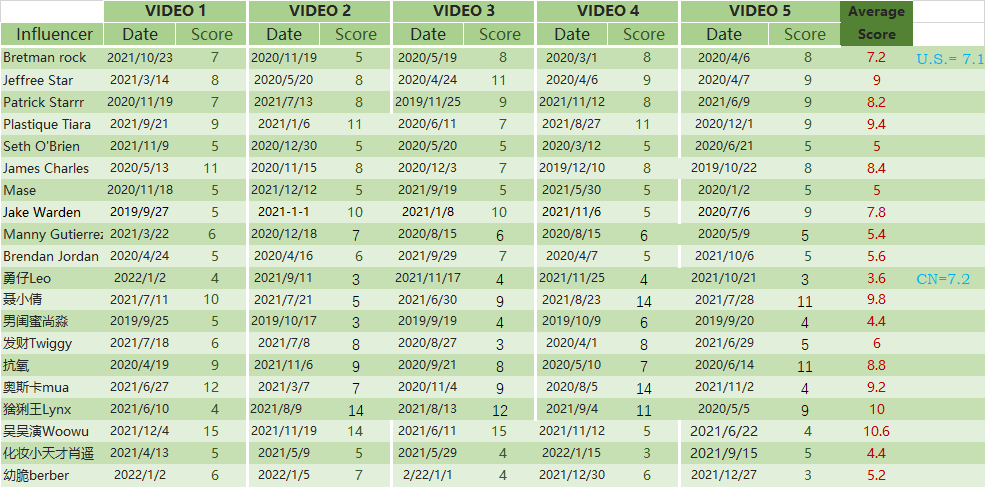
As shown in the table above, the results of the scoring of appearances for the American and Chinese influencers are 7.1 and 7.2, respectively. Particularly, American influencers who have high scores are Jeffree Star, Patrick Starrr, Plastique Tiara, and James Charles. On the other hand, NieXiaoQian, Kang Yang, AoSiKa mua, SheLiWant Lynx, and Woowu have high scores from China. The average score are very close but Chinese influencers have slightly higher score than American influencers. This is unexpected from early hypothesis, anticipation would be that the U.S. should have a higher score because of their more developed makeup culture of men. This prompted us to reflect on the reason behind this and one explanation that could describe why Chinese influencers have a higher score is because of its infancy in male and makeup culture. As one of the early group of influencers emerging on Chinese social media as male makeup influencers, they are in their infancy on both social media functionality and makeup skills and presentation. At the same time, the public has not yet formed an accurate recognition and acceptance of them. As a result, in order to show their unique identity to the society, Chinese male makeup influencers are eager to wear and put on additional accessories with obvious feminine senses, as they are desperate in revealing their identity by labelling and emphasizing their uniqueness. This explains the reason why Chinese influencers have a higher score as the scores can be significantly impacted if the influencer wears extra accessories, such as high heels, wigs and stockings and gloves.
Compared with American influencers, this study observed that while some influencers have very feminine appearance in their overall scoring, such as James Charles and Jeffree Star, other influencers such as Mannymua and Seth O’Brien have different kinds of feminine appearances. Specifically, they would often emphasize on their makeup but usually wear neutral clothing such as T-shirts and sweaters, and rarely wear any wigs or accessories such as earrings. From this comparison, it is not difficult to understand the reason why Chinese makeup influencers have a slightly higher score, which is contributed by their enthusiasm in revealing their identity yet deficient in creating their own style of presentation. As a result, they would usually adopt makeup styles such as western makeup or Japanese anime makeup looks that would often requires them to appear as more feminine than other choices of makeup style.
5. Finding and Discussion
For a better layout of the analysis part, this study categorized twenty influencers under the category of daily (light) makeup, heavy makeup and drag queen for in-depth examination and discussion.
5.1 Daily (Light) Makeup
The first examination would be the U.S. and China male makeup influencers who prefer to display daily (light) makeup in their Tik Tok and Dou Yin posts. One major difference is the way they reflect their aesthetic choice of light makeup, and Figure 1 and 2 below can demonstrate the differences perfectly.
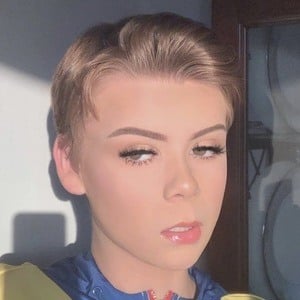
Figure 1: Tik Tok screenshot: @Seth Obrien, 19 March 2022.
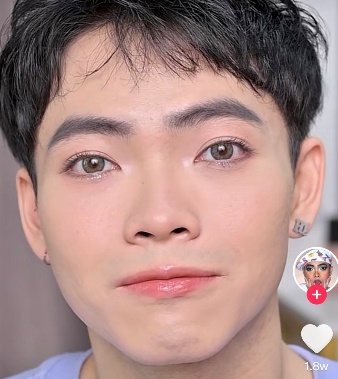
Figure 2: Dou Yin screenshot: @YongZaiLeo, 19 March 2022
One well-known Chinese makeup influencer, Qing Meng answered the question about the differences between Asian and Western daily makeup on Zhihu, the Chinese version of Quora [21]. She described Western makeup as high eyebrows, dimensionality, and a sense of distance while Asian makeup style as more tender, exquisite, natural, clear and delicate [21]. She further explains that Western makeup looks are more inclined to colorific collocation, thick lips, and the finishing looks are usually sex appealing. On the other hand, the Chinese makeup style is fresher and cleaner in tone and is used more to highlight the individual’s fluffy temperament with a gentle and delicate touch. An example in the study would be the comparison between Seth O’Brien and Mase from the U.S. and NanGuiMiShangMiao and YongZai Leo from China. The two American influencers have a score of 5 and 5 and the Chinese influencers have 3.6 and 4.4, respectively. This indicates that American influencers have a more feminine appearance than Chinese influencers, though they all perform daily makeup. This phenomenon also suggests how Song examines the Chinese concept of masculinity [22]. He observes that in China, people who usually wear bright colour clothing and always shaved their beards are called “XiaoSheng”, which is a word that originated from a male role in Chinese opera. The original definition of this word is used to describe males that are young and gentle but have gradually become synonymous with “sissy”, and these “XiaoSheng” often receive negative comments accusing them of lacking masculinity. This may result in many Chinese male daily makeup influencers trying to avoid being too feminine in their makeup and video to avoid public accusations.
Aside from the differences in aesthetic reflection on makeup style, there are also some distinctions in how American and Chinese influencers create their video content. American influencers usually prefer inserting popular music in the background of the posts, and their videos usually focus on showcasing the look of the finished makeup of each step. Specifically, many American Tik Tok influencers will have a scene of them without makeup at the beginning, followed by a scene of them with foundation, contour, eyeshadow, etc.… The number of scenes varied from influencer to influencer, but the similarity is that they usually focus on the finished look rather than the process of makeup. However, Chinese male influencers take Dou Yin in some opposing ways. First, they prefer posting the whole process of makeup instead of only revealing the final look. While most American influencers use music as their background, most Chinese influencers prefer to explain each step of the makeup process and give beauty tips along the way using their natural verbal voice. Lastly, Chinese influencers concentrate on the tutorial process, therefore they would often use a close-up shooting angle in most of their posts.
According to Palalic et al.’s article, they concluded their study by suggesting that social media has a significant impact on Pakistani consumers’ purchasing behaviour. Although their research targets Pakistanis, their conclusion can also apply in this study, which is that advertisement is also a very important factor for the influencer’s video, especially for those who mainly do daily makeup for their social media. Because of the distinctive characteristic of daily makeup, that is, its practicality for viewers to accept and learn, advertisements are very common in these influencers’ videos. However, based on the observation, Chinese male makeup influencers have more advertisements in their posts. Liang explains that the opinions of the opposite sex play an important role in the consuming behaviour of female consumers [23]. Males’ views of beauty are more likely to gain psychological approval from female consumers. In Chinese society, the opinions of males about beauty still play an important role for some female groups.
5.1 Heavy Makeup
Compared with light makeup, heavy makeup lacks the daily practicality but has a much stronger performance nature. On Dou Yin, the number of followers and likes of Chinese heavy makeup male influencers shows that they are not as attentive as light makeup influencers. This study examined that nearly all the comments are positive and discuss mainly regarding the makeup. There is no discussion directed to the makeup artists, even if there is, it's very limited. One possible explanation for the little negative comments could be a result of algorithms, in which the algorithm in social media classifies this type of video content as a “niche hobby” and prioritize it with relevant and interested viewers. In this way, heavy makeup male makeup influencers in China gain a high degree of inclusiveness within a certain group of users who are appreciating the content, thus leaving mostly positive comments. However, this also implies that this group of influencers is less popular and raises less social attention and controversy. They are mainly interested by a certain group of viewers but remain a minority group in society. While social controversy is important in raising awareness and public support, Chinese viewers have fewer gestures in helping to achieve that.
As opposed to Chinese influencers, this study discovered that American influencers who prefer heavy makeup are proportionally more famous; they would often receive higher attention, with more followers and higher views. After reviewing the comments for U.S. influencers, they have mostly positive compliments on the makeup and the look, but some top-liked comments would also involve discussing the influencers’ personal life such as rumors and gossip. As a result, American influencers receive more negative comments because of that. It is also observable that American influencers appear to be more realistic and comprehensive in self-imaging, for example, they are more likely to post their daily lives and feelings besides beauty-related content. Although they may face more negative comments, it reflects a higher degree of social acceptance for American male makeup influencers. In other words, American Tik Tok users reveal a sense of ease in commenting on whatever they want around the influencers, they are not afraid in leaving negative comments, unlike Chinese viewers, which shows that they truly accept and recognize this group of influencers as “just any human being”.
By “crossing the gender line”, male makeup influencers are deliberately blurring the boundary between masculinity and femininity. Appearing as a woman is seen as an eye-catching strategy for male makeup influencers [24]. In the gradual construction of a professional identity that evolves into a challenge to the gender order, “crossing the gender line” as a source of video content also determines how male makeup influencers act in front of the camera [25]. In addition to showing dressing and makeup, American influencers are good at showing femininity through posing and movements, they often use full-body shots to reveal their extroverted side by shooting outdoor, as demonstrated in the Figure 3. The conflict between male and female gender characteristics on the same body can be mitigated by creating a complete female image. They not only naturalize the traditional aesthetics of society and subconscious role templates in audiences’ view but also present the image of “male makeup influencers” successfully. On the contrary, Chinese influencers mostly focus on their faces using close-ups, as shown in Figure 4. By employing professional lighting, background boards, props and other equipment, they create a specific space to frame their feminine characteristics. This secretive act, which should happen backstage, is put in front of the public, and the video itself has a strong professional non-daily spectacle. The huge contrast between the before and after makeup also strengthens the dramatic effect, and to a certain extent weakens the bound of traditional gender perception of the audiences [26].

Figure 3: Tik Tok screenshot: @jeffreestar, 19 March 2022.
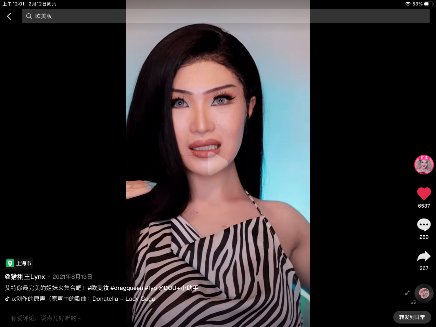
Figure 4: Dou Yin screenshot: @LynxWang, 28 March 2022
In terms of makeup, American influencers are deepening and expanding on top of light makeup. Chinese influencers, on the other hand, concentrate on two styles: theatrical makeup style and western makeup, which have greater differences compared to light makeup and are more artistic and unique at the same time.
Meanwhile, the scores of appearances for Chinese and American male makeup influencers prove that there are not many differences in the aesthetic appearance of the two countries. This is unexpected from our hypothesis at the beginning. By looking at the video contents, it is observable that Chinese male makeup influencers who wear heavy makeup are more likely to imitate the behavior and dressing of Western influencers as shown in Figure 5. Their makeup style, makeup skills, and dressing style all adopt an obvious Western style. At the same time, they also prefer to use Western popular music in their background and sometimes use English vocabulary in their videos. While the main audience for Dou Yin is Chinese, the probability of provoking viewers to think rationally and generate critical emotions is much lower. It is a well-known fact that the U.S. is a more gender-inclusive and acceptive country, so even when Chinese influencers adopt Western aesthetic preferences in their videos, viewers tend to subconsciously rationalize the content of the videos, reducing the controversy of the video and influencers as well.
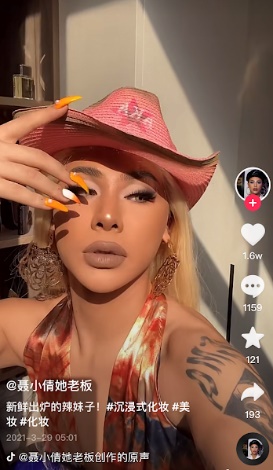
Figure 5: Dou Yin screenshot: NieXiaoQin (@1697797797), 28 March 2022
5.2 Drag Queen
The final finding revolves the two most popular drag queens on Tik Tok and Dou Yin, and they are Duc Tran Nguyen (stage name Plastique Tiara) and Eli Woo Woowu (stage name Woowu). Being both constants of the famous variety show, Rupaul’s Drag Queen, there are no observable appearnce differences in nature between the two. As Figure 6 and 7 shown below, they are very similar in terms of hairstyle, clothing choice and posing in front of the camera. They are not timid in exposing the process of transformation in their videos, whilst actually enjoy presenting the process from a male look to a very feminine and attractive looking at the end. Both of their social media contents are very similar as well, for example, most of their posts contain selfies and displays of their looks, and sometimes some Tik Tok/Dou Yin trends, such as the wiping mirror trend that is once very popular. Their presence as the most influential male makeup influencers in both U.S. and China suggest their efforts in increasing awareness to gender ideas. From mainstream TV to personal social media accounts, drag culture is important not only to the individual, but the viewers, the LGBTQ+ community and the world in order to create a safe, pround and beautiful landscape to do that in.
One significant difference is that while U.S. drag queen culture is still undergoing marginalization, it is still more common compared with China, and U.S. viewers are more open-minded with this community. Whereas in China, drag queen culture is still in its infancy. As a result, this study discovered that besides selfies and trends on their social media accounts, such as what Plastique Tiara mostly has, Woowu’s account seemed to cover with an addition layer of responsibility to publicize drag culture to Chinese viewers. Whether it is in the video contents or the comments, there are distinctive differences compared with Chinese light and heavy makeup influencers. Specifically, the comments from the Dou Yin users do not limit their support and compliments to the makeup, but in addition with appreciation to Woowu’s effort in advocating drag queen culture. Especially under the posts where Woowu is contesting in RuPaul’s Drag Race, many Chinese users express their support through comments such as “I am so proud to have a drag queen like you in China” and “Thank you for letting the world see Chinese drag queen”, to demonstrate their supportive attitudes towards drag queens. It is observable in this way that Woowu not only provides visual entertainment through his social media but also carries a sense of mission for cultural communication. It should also be noted that during the contest, Woowu adopted Chinese music and culture in his performance which allow the mixture of Chinese elements in this Western culture. Moreover, in his Dou Yin, he demonstrated a professional drag queen who can speak fluent English, who contested in various drag queen races and had high educational level. This is unusual compared with other Chinese male makeup influencers who bring innovation and uniqueness into their role as male makeup influencers.
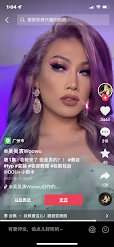
Figure 6: Dou Yin screenshot: Woowu (@614648655)), 29 March 2022.
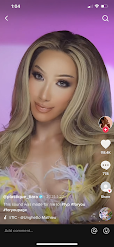
Figure 7: Tik Tok screenshot: @plastique_tiara, 29 March 2022.
Perhaps of their professions and experiences from the stage, both Plastique Tiara and Woowu’s Tik Tok/Dou Yin becomes their new global platform which shows a high production value, and which equipped with professional lighting, wind machines and props that make their contents distinctive from other influencers.
According to Berkowitz and Belgrave’s study, drag queens in the U.S. are still experiencing marginalization, both economically and socially, however, they mentioned that the rewards can be empowering for drag queens [27]. Rewards such as the allure of transformation, and the situational power such as the attention and status they received through performing as well as the income are some main factors that drive them into continually pursuing this profession [27]. It is also the importance of social media such as Tik Tok and Dou Yin today, especially during the pandemic where performances may be cancelled due to restrictions that still allow these drag queens to adopt another way of exposure.
6. Limitation
There are several limitations to this study. First, the inadequate instruments used to collect the data, that is, this study lacks any objective instrument such as any mechanical software or applications that allow for a more efficient analysis of the posts and comments. The authors are the primary instrument for all the data collection and analysis, as a result, there may be subjective interpretations that could result in a bias scoring and results despite the efforts in avoiding so. Secondly, this recent phenomenon resulted in a scarcity of previous studies and data, which is inadequate to help identify and shape the scope of this study. As this study is a very early attempt in examining male makeup influencers by comparing their differences between two countries (cultures), this study wished to fill in the gap the contemporary studies in communication that can shed some light on future studies that concern the rising groups of key opinion leaders in the virtual community. Lastly, it is the main goal of this research to explore male makeup influencers from the U.S. and China, however, this study emphasized a great length in exploring the appearances, and how are they different. Though there is significant research value in this area, future studies are encouraged to examine other areas of this topic, such as the recognition of this group in the online and offline world, the relationship between their hypersexuality posing and presentation for a more comprehensive analysis of this group.
7. Conclusion
The main objective of this research is to study the differences between American and Chinese male makeup influencers on Tik Tok/Dou Yin, and how these differences can be reflected in the perspective of beauty aesthetics, post content and comments, as well as social factors of the two cultures. This study employed a mix-method with both content analysis of the Tik Tok/Dou Yin posts and a structured scoring system of the appearances of the influencers to observe any differences between them.
From the result and findings from this study, it seems that these male makeup influencers are entering a female-dominated industry but have not stopped them from expressing their own identity and aesthetics of beauty. They have created their version of beauty and have revolutionized gender presentation and beauty norms through the aid of the Internet and social media. The fact that the majority of viewers for the videos are female speaks to the reality that women are gradually accepting beauty tips from any professional makeup expert, regardless of their gender.
Currently, limited studies are exploring this raising group of influencers and this study aims to fill in the void. This study also urges future studies into researching more in-depth male makeup influencers and how are they changing the landscaping of the online beauty community. For example, future studies can conduct interviews or questionnaires to further examine how Tik Tok/Dou Yin users perceive this rising group of influencers and what are some impacts and experiences social media has brought towards this group of influencers. Moreover, if one wants to discover how these influencers impact minority groups within our societies, it is recommended for future researchers to conduct a study interviewing the local LGBTQ community members to examine whether these influencers bring positive or negative impact to the group.
To conclude, this group of influencers has a purpose that is beyond merely performing makeup but using them as a tool to present their definition of beauty in a used-to-be female-dominated domain. With the aid of social media platforms, video filters and effects, the topic of men putting on males no longer represents taboo but evolved into a more novel and fun to present their queerness as a move to withstand the still-existing marginalization of the group.
When people think of Tik Tok/Dou Yin, they usually think of attractive influencers dancing in front of the camera with the most popular music playing in the back or the funny memes they are doing. However, beyond providing mere visual entertainment, a group of influencers are changing the landscape of gender beauty and presentation. By stepping into a female-oriented space and using women-targeted beauty products, these male makeup influencers are interchanging the cultural visibility signaling the importance of their existence in the current political and cultural project. Through their makeup expertise, hyper-sexual posing and feminine ideals they are inserting their positions in a marketplace that often searches for novelty and variations [5]. It is hence important to examine their appearance in Tik Tok/Dou Yin, by further contrasting American and Chinese influencers, this study explores how they empower their visibility in the beauty community through different aesthetic choice of presentation with the blend of distinctive cultural and social shadows.
References
[1]. Connell, A. (February 14, 2022). 32 Latest TikTok Statistics, Facts, And Trends For 2022. Blogging Wizard. Retrieved from: https:bloggingwizard.com/tiktok-statistics/
[2]. Statista. (February 2021). Number of TikTok influencers worldwide from 2018 to 2020. Retrieved from https://www.statista.com/statistics/1257689/number-tiktok-influencers/
[3]. Dou Yin. (2020). 2020 Dou Yin Data Report. Retrieved from htpp://ww.360doc.com/content/21/0114/10/57935769_956798706.shtml
[4]. Geyser, W. (February 15, 2022). Tik Tok Statistics – Revenue, Users & Engagement Stats (2022). Influencer Marketing Hub. Retrieved from https://influencermarketinghub.com/tiktok-stats/
[5]. Chen, S. X., & Kanai, A. (2021). Authenticity, uniqueness and talent: Gay male beauty influencers in post-queer, postfeminist Instagram beauty culture. European Journal of Cultural Studies, 25(1), 97-116. doi:10.1177/136754921988966
[6]. Jalba, R. (2018). If and how are Instagram’s top male makeup influencers shifting the beauty norms & beauty representations in a female oriented industry (Master Thesis), Faculty of Culture and Society, Malmö University, Malmö Sweden
[7]. Oliver, D. (February 18, 2022). Men are trying out makeup – and it’s no surprise, experts say. USA Today. Retrieved from: https://www.usatoday.com/story/life/2022/02/18/men-straight-lgbtq-makeup-tiktok/6788662001/
[8]. Gui, C. L. (September 7,2018). What is “masculinity” today? Chinese People’s Daily [Weibo post]. Retrieved from https://weibo.com/ttarticle/p/show?id=2309404281529374237719
[9]. Montell, A. (December 9, 2020). From 4000 BCE to Today: The Fascinating History of Men and Makeup. Byrdie. Retrieved from: https://byrdie.com/history-makeup-gender
[10]. Flügel, J. C. (1930). The Psychology of Clothes. London: Hogarth Press.
[11]. Fury, A. (September 14, 2014). A Men’s Wear Revolution. The New York Times Style Magazine. Retrieved from: https://www.nytimes.com/2014/09/14/t-magazine/a-mens-wear-revolution.html
[12]. Rosen, D. (December 4, 2021). Culture Wars: “The Great Male Renunciation”. Counterpunch. Retrieved from https://www.counterpunch.org/2021/11/04/culture-wars-the-great-male-renunciation/
[13]. Lipovetsky, G. (2002). The Empire of Fashion: Dressing Modern Democracy. United Kingdom: Princeton University Press.
[14]. Groundwater, C. (June 25, 2021). Not Just a TikTok Fad: Men Have Been Wearing Makeup Since the Dawn of Civilization. GQ. Retrieved from: https://www.gq.com/story/the-long-history-of-men-and-makeup
[15]. Kimmel, M. (1996). Manhood in America: a cultural history, New York: Free Press.
[16]. Simpson, M. (August 13, 2008). Metrosexuality: in your face. The Guardian. Retrieved from: https://www.theguardian.com/commentisfree/2008/aug/13/beauty.gender
[17]. Hall, M., Gough, B., & Seymour-Smith, S. (2012). “I am METRO, NOT Gay!”: Discursive Analysis of Men’s Accounts of Makeup Use on YouTube. The Journal of Men’s Studies, 20(3), 209-226. doi:10.3129/jms.2003.209
[18]. Shen, B., & Bissell, K. (2013). Social Media, Social Me: A Content Analysis of Beauty Companies’ Use of Facebook in Marketing and Branding. Journal of Promotion Management, 19(5), 629-651. doi:10.1080/10496491.2013.829160
[19]. Carrotte, P. I., & Lim, M. S. C. (2017). “Fitspiration” on Social Media: A Content Analysis of Gendered Images. Journal of Medical Internet Research, 19(3), e95-e95. doi:10.2196/jmir.6368
[20]. Su, Y., Kunkel, T., & Ye, N. (2021). When abs do not sell: The impact of male influencers conspicuously displaying a muscular body on female followers. Psychology & Marketing, 38(2), 286-297. doi:10.1002/mar.21322
[21]. Meng, Q. (2020). What are the differences between European and American makeup and Japanese and Korean makeup? Zhihu. Retrieved from https://www.zhihu.com/question/28143172
[22]. Song, G. (2004). The fragile scholar: power and masculinity in Chinese Culture. Hong Kong University Press.
[23]. Liang, J. C. (2020). The Communication Analysis of “Internet Celebrity Economy” – Taking beauty blogger Li JiaQi as an example. Retrieved from: https://kns.cnki.net/kcms/detail/detail.aspx?dbcode=CJFD&dbname=CJFDLAST2020&filename=CXBI202002054&uniplatform=NZKPT&v=-xdPGydN64jU0N3ZK0CV8Qik-aV1o5zscAgmR8LViQgLs27JF2n6fiWegwr1j84Q
[24]. Li, L. J. (2021). A Study on the Motivation of Male Images and Female Consumers in Beauty Videos in the Self-Media Era: Based on Lacan’s Subjective Identity and Gaze Theory. Adolescent Years, 2021(03), 16-17. Retrieved from: https://www.cnki.com.cn/Article/CJFDTotal-QCSY202103008.htm
[25]. Liu, X. Y. (2020). Gender Performance and Discourse Negotiation (Master Thesis). NanJing University, NanJing. doi:10.27235/d.cnki.gnjiu.2020.001872.
[26]. HxWang. (2020, July 26). Gender perception of male beauty bloggers - take Li Jia Qi as an example. Retrieved from: https://mp.weixin.qq.com/s/TT3K72Djl5VAQZygMPdpWA
[27]. Berkowitz, D., & Belgrave, L. L. (2010). “She Works Hard for the Money”: Drag Queens and the Management of Their Contradictory Status of Celebrity and Marginality. Journal of Contemporary Ethnography, 39(2), 159-186. doi:10.1177/0891241609342193.
Cite this article
Tan,J.;Yang,P.;Wang,Z. (2023). Boys and Beauty: Male Makeup Influencers in Tik Tok – A U.S. and China Comparison. Lecture Notes in Education Psychology and Public Media,2,325-337.
Data availability
The datasets used and/or analyzed during the current study will be available from the authors upon reasonable request.
Disclaimer/Publisher's Note
The statements, opinions and data contained in all publications are solely those of the individual author(s) and contributor(s) and not of EWA Publishing and/or the editor(s). EWA Publishing and/or the editor(s) disclaim responsibility for any injury to people or property resulting from any ideas, methods, instructions or products referred to in the content.
About volume
Volume title: Proceedings of the 3rd International Conference on Educational Innovation and Philosophical Inquiries (ICEIPI 2022), Part I
© 2024 by the author(s). Licensee EWA Publishing, Oxford, UK. This article is an open access article distributed under the terms and
conditions of the Creative Commons Attribution (CC BY) license. Authors who
publish this series agree to the following terms:
1. Authors retain copyright and grant the series right of first publication with the work simultaneously licensed under a Creative Commons
Attribution License that allows others to share the work with an acknowledgment of the work's authorship and initial publication in this
series.
2. Authors are able to enter into separate, additional contractual arrangements for the non-exclusive distribution of the series's published
version of the work (e.g., post it to an institutional repository or publish it in a book), with an acknowledgment of its initial
publication in this series.
3. Authors are permitted and encouraged to post their work online (e.g., in institutional repositories or on their website) prior to and
during the submission process, as it can lead to productive exchanges, as well as earlier and greater citation of published work (See
Open access policy for details).
References
[1]. Connell, A. (February 14, 2022). 32 Latest TikTok Statistics, Facts, And Trends For 2022. Blogging Wizard. Retrieved from: https:bloggingwizard.com/tiktok-statistics/
[2]. Statista. (February 2021). Number of TikTok influencers worldwide from 2018 to 2020. Retrieved from https://www.statista.com/statistics/1257689/number-tiktok-influencers/
[3]. Dou Yin. (2020). 2020 Dou Yin Data Report. Retrieved from htpp://ww.360doc.com/content/21/0114/10/57935769_956798706.shtml
[4]. Geyser, W. (February 15, 2022). Tik Tok Statistics – Revenue, Users & Engagement Stats (2022). Influencer Marketing Hub. Retrieved from https://influencermarketinghub.com/tiktok-stats/
[5]. Chen, S. X., & Kanai, A. (2021). Authenticity, uniqueness and talent: Gay male beauty influencers in post-queer, postfeminist Instagram beauty culture. European Journal of Cultural Studies, 25(1), 97-116. doi:10.1177/136754921988966
[6]. Jalba, R. (2018). If and how are Instagram’s top male makeup influencers shifting the beauty norms & beauty representations in a female oriented industry (Master Thesis), Faculty of Culture and Society, Malmö University, Malmö Sweden
[7]. Oliver, D. (February 18, 2022). Men are trying out makeup – and it’s no surprise, experts say. USA Today. Retrieved from: https://www.usatoday.com/story/life/2022/02/18/men-straight-lgbtq-makeup-tiktok/6788662001/
[8]. Gui, C. L. (September 7,2018). What is “masculinity” today? Chinese People’s Daily [Weibo post]. Retrieved from https://weibo.com/ttarticle/p/show?id=2309404281529374237719
[9]. Montell, A. (December 9, 2020). From 4000 BCE to Today: The Fascinating History of Men and Makeup. Byrdie. Retrieved from: https://byrdie.com/history-makeup-gender
[10]. Flügel, J. C. (1930). The Psychology of Clothes. London: Hogarth Press.
[11]. Fury, A. (September 14, 2014). A Men’s Wear Revolution. The New York Times Style Magazine. Retrieved from: https://www.nytimes.com/2014/09/14/t-magazine/a-mens-wear-revolution.html
[12]. Rosen, D. (December 4, 2021). Culture Wars: “The Great Male Renunciation”. Counterpunch. Retrieved from https://www.counterpunch.org/2021/11/04/culture-wars-the-great-male-renunciation/
[13]. Lipovetsky, G. (2002). The Empire of Fashion: Dressing Modern Democracy. United Kingdom: Princeton University Press.
[14]. Groundwater, C. (June 25, 2021). Not Just a TikTok Fad: Men Have Been Wearing Makeup Since the Dawn of Civilization. GQ. Retrieved from: https://www.gq.com/story/the-long-history-of-men-and-makeup
[15]. Kimmel, M. (1996). Manhood in America: a cultural history, New York: Free Press.
[16]. Simpson, M. (August 13, 2008). Metrosexuality: in your face. The Guardian. Retrieved from: https://www.theguardian.com/commentisfree/2008/aug/13/beauty.gender
[17]. Hall, M., Gough, B., & Seymour-Smith, S. (2012). “I am METRO, NOT Gay!”: Discursive Analysis of Men’s Accounts of Makeup Use on YouTube. The Journal of Men’s Studies, 20(3), 209-226. doi:10.3129/jms.2003.209
[18]. Shen, B., & Bissell, K. (2013). Social Media, Social Me: A Content Analysis of Beauty Companies’ Use of Facebook in Marketing and Branding. Journal of Promotion Management, 19(5), 629-651. doi:10.1080/10496491.2013.829160
[19]. Carrotte, P. I., & Lim, M. S. C. (2017). “Fitspiration” on Social Media: A Content Analysis of Gendered Images. Journal of Medical Internet Research, 19(3), e95-e95. doi:10.2196/jmir.6368
[20]. Su, Y., Kunkel, T., & Ye, N. (2021). When abs do not sell: The impact of male influencers conspicuously displaying a muscular body on female followers. Psychology & Marketing, 38(2), 286-297. doi:10.1002/mar.21322
[21]. Meng, Q. (2020). What are the differences between European and American makeup and Japanese and Korean makeup? Zhihu. Retrieved from https://www.zhihu.com/question/28143172
[22]. Song, G. (2004). The fragile scholar: power and masculinity in Chinese Culture. Hong Kong University Press.
[23]. Liang, J. C. (2020). The Communication Analysis of “Internet Celebrity Economy” – Taking beauty blogger Li JiaQi as an example. Retrieved from: https://kns.cnki.net/kcms/detail/detail.aspx?dbcode=CJFD&dbname=CJFDLAST2020&filename=CXBI202002054&uniplatform=NZKPT&v=-xdPGydN64jU0N3ZK0CV8Qik-aV1o5zscAgmR8LViQgLs27JF2n6fiWegwr1j84Q
[24]. Li, L. J. (2021). A Study on the Motivation of Male Images and Female Consumers in Beauty Videos in the Self-Media Era: Based on Lacan’s Subjective Identity and Gaze Theory. Adolescent Years, 2021(03), 16-17. Retrieved from: https://www.cnki.com.cn/Article/CJFDTotal-QCSY202103008.htm
[25]. Liu, X. Y. (2020). Gender Performance and Discourse Negotiation (Master Thesis). NanJing University, NanJing. doi:10.27235/d.cnki.gnjiu.2020.001872.
[26]. HxWang. (2020, July 26). Gender perception of male beauty bloggers - take Li Jia Qi as an example. Retrieved from: https://mp.weixin.qq.com/s/TT3K72Djl5VAQZygMPdpWA
[27]. Berkowitz, D., & Belgrave, L. L. (2010). “She Works Hard for the Money”: Drag Queens and the Management of Their Contradictory Status of Celebrity and Marginality. Journal of Contemporary Ethnography, 39(2), 159-186. doi:10.1177/0891241609342193.









